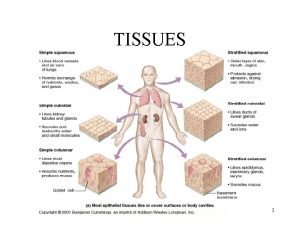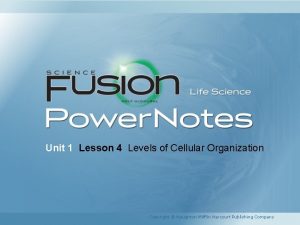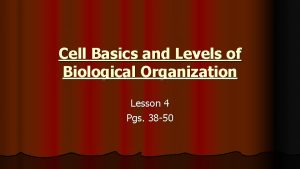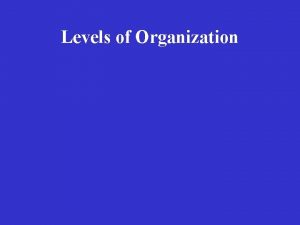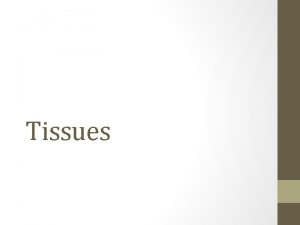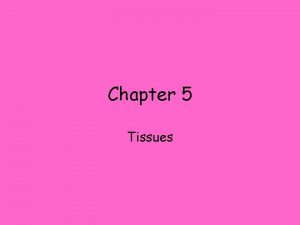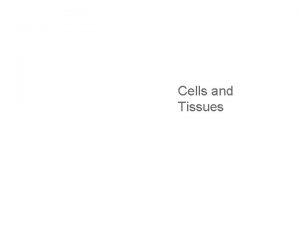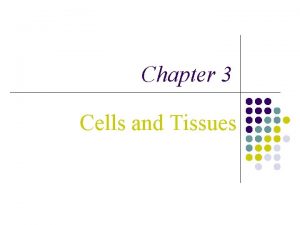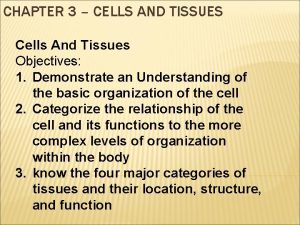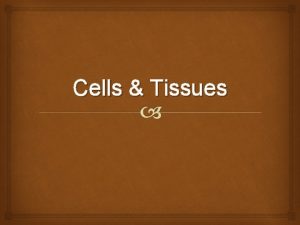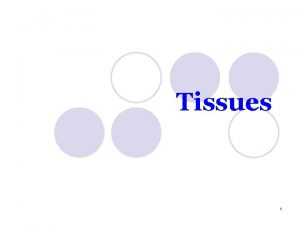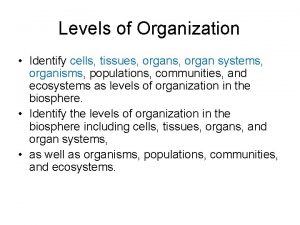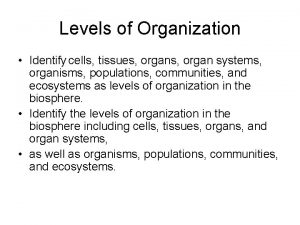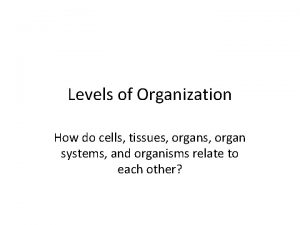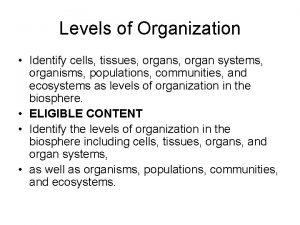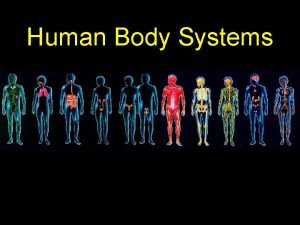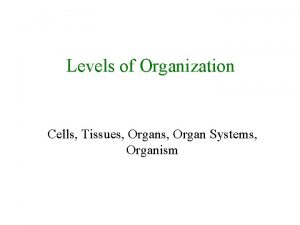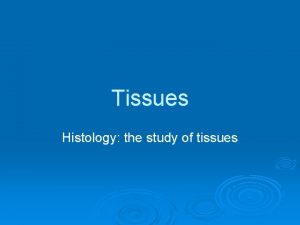Unit 2 Cells and Tissues Levels of Organization






























- Slides: 30

Unit 2 - Cells and Tissues

Levels of Organization • Cells – Building blocks of the body • Tissues – A group of similar cells that combine to perform a certain function (4 - muscle, • nervous, connective, epithelial) • Organs – Two or more different types of tissue – combined to perform a certain • function – (kidney, liver, lung) • System – organization of > 2 or more organs perform a more general function


Histology-study of tissues • • • 4 types of tissue in the body epithelial connective muscular nervous

Epithelial Tissue Arrangements: • Simple- Cells are found in a single layer attached to the basement membrane • Stratified- Cells are found in 2 or more layers stacked atop each other • Pseudostratified- a single layer of cells that appears to be multiple layers due to variance in height and location of the nuclei in the cells.

Pseudo stratified

Epithelial Tissue Shapes: • Squamous- (Latin, squama- scale)- flat, thin, scale-like cells • Cuboidal- cells that have a basic cube shape. Typically the cell's height and width are about equal. • Columnar- tall, rectangular or column-shaped cells. Typically taller than they are wide.


Epithelial characteristics: • • major tissue of glands inner lining of body cavities inner lining of hollow organs anchored to connective tissue by a basement membrane • lacks blood vessels








Connective Tissue functions: • • • Binds structures Provides support Protection Stores fat Produces blood cells

Connective Tissue characteristics: • Cells farther apart • Intercellular material/matrix between them • FIBROBLAST- major cell creates fibers







Muscular Tissue * MOVEMENT of structures or materials 3 Types: • SKELETAL/STRIATED • SMOOTH • CARDIAC




NERVOUS TISSUE • Transmit electrical impulses throughout the body • Includes- brain, spinal cord, nerves • Neurons- basic unit of nervous system, TRANSMIT impulses • Neuro. GLIA- supporting cells, no impulses

 Body tissue
Body tissue Body tissue
Body tissue Body tissues chapter 3 cells and tissues
Body tissues chapter 3 cells and tissues Chapter 3 cells and tissues
Chapter 3 cells and tissues Eisonophil
Eisonophil Chapter 3 cells and tissues
Chapter 3 cells and tissues Chapter 3 cells and tissues figure 3-7
Chapter 3 cells and tissues figure 3-7 Anatomy of a generalized cell figure 3-1 answer key
Anatomy of a generalized cell figure 3-1 answer key Tissues are groups of similar cells working together to
Tissues are groups of similar cells working together to Tissues are groups of similar cells working together to
Tissues are groups of similar cells working together to Divisions of anatomy
Divisions of anatomy A group of cells similar in structure and function
A group of cells similar in structure and function Unit 1 levels of organization
Unit 1 levels of organization Olfactory groove keros classification
Olfactory groove keros classification Chlorocruorin
Chlorocruorin Venn diagram animal and plant cells
Venn diagram animal and plant cells Masses of cells form and steal nutrients from healthy cells
Masses of cells form and steal nutrients from healthy cells Medullary portion of collecting duct
Medullary portion of collecting duct Pineal gland
Pineal gland Haploid and diploid venn diagram
Haploid and diploid venn diagram Why dna is more stable than rna
Why dna is more stable than rna Prokaryotic versus eukaryotic
Prokaryotic versus eukaryotic Prokaryotic cell
Prokaryotic cell Why did robert hooke name cells “cells”?
Why did robert hooke name cells “cells”? Label
Label What animals have prokaryotic cells
What animals have prokaryotic cells Is a red blood cell prokaryotic or eukaryotic
Is a red blood cell prokaryotic or eukaryotic Chapter 8 cellular reproduction cells from cells
Chapter 8 cellular reproduction cells from cells Cell substance
Cell substance Levels of biological organization
Levels of biological organization Costa's house levels of questioning
Costa's house levels of questioning









